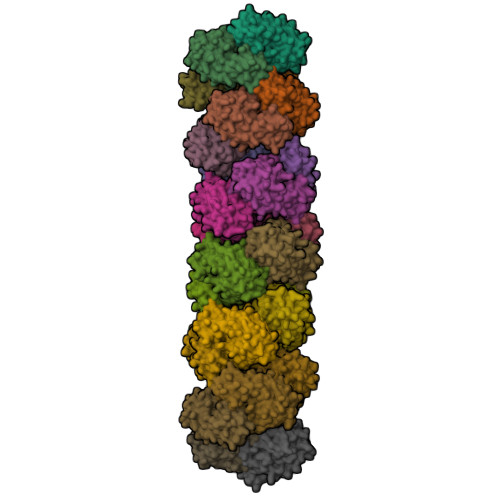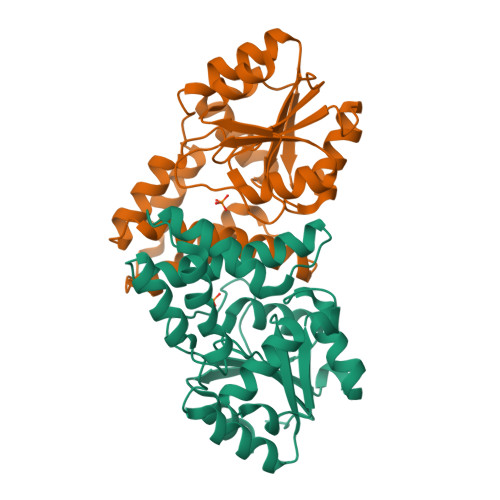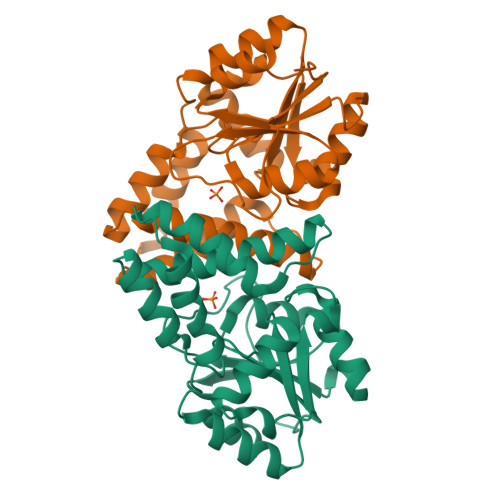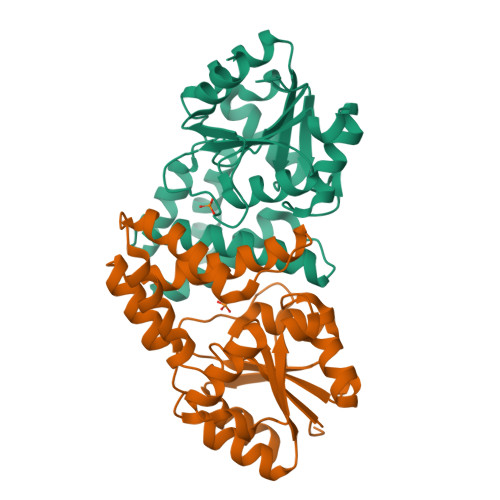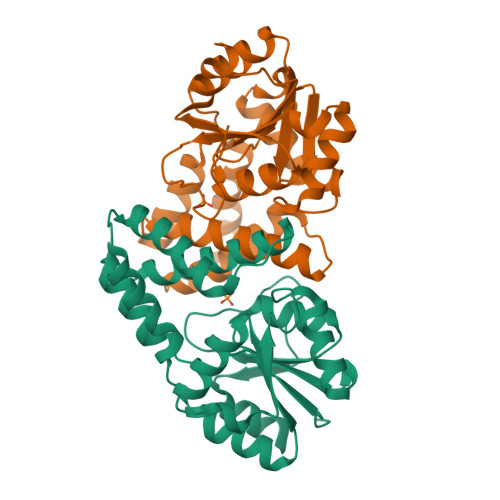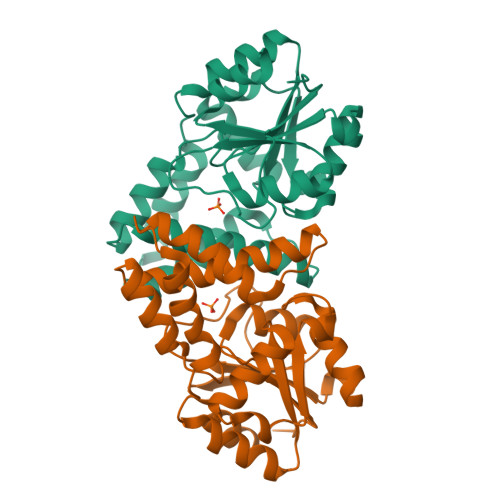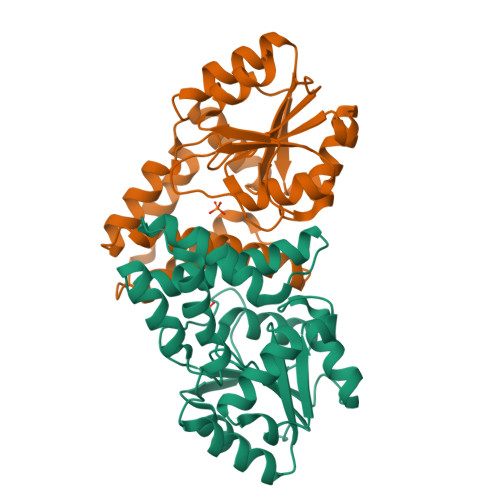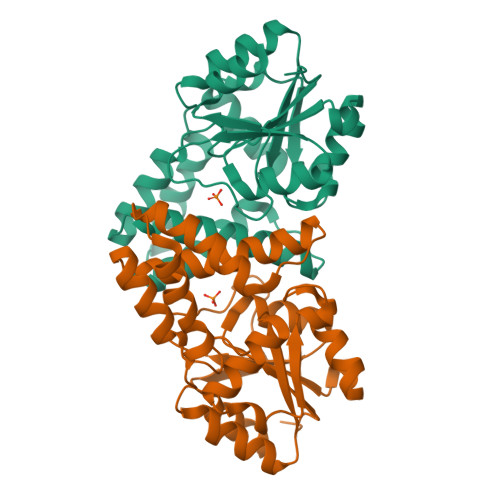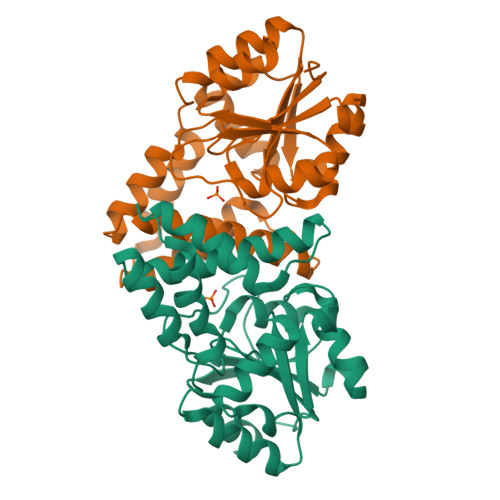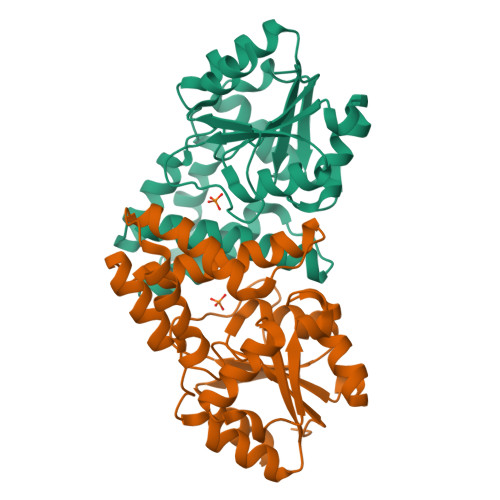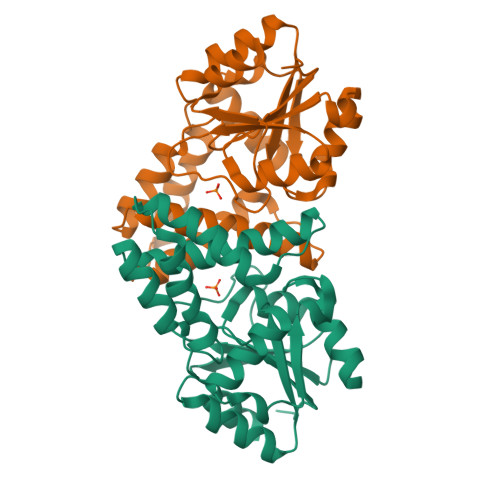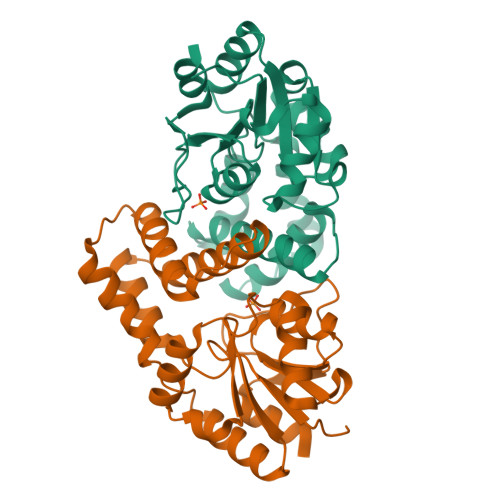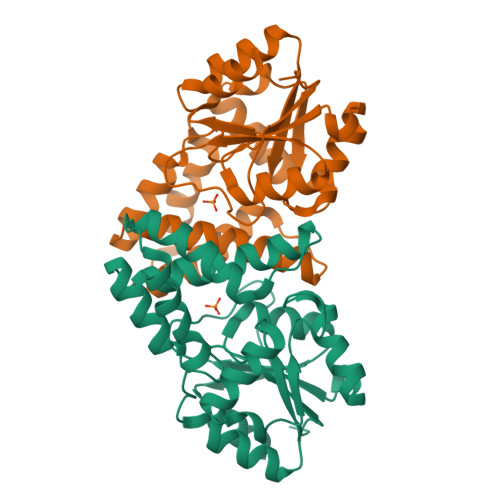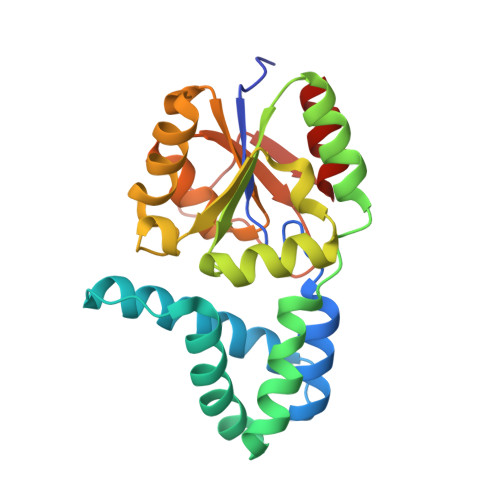X-ray structure and mechanism of ZgHAD, a l-2-haloacid dehalogenase from the marine Flavobacterium Zobellia galactanivorans.
Grigorian, E., Roret, T., Czjzek, M., Leblanc, C., Delage, L.(2023) Protein Sci 32: e4540-e4540
- PubMed: 36502283
- DOI: https://doi.org/10.1002/pro.4540
- Primary Citation of Related Structures:
7ARP, 7ASZ, 7QNM - PubMed Abstract:
Haloacid dehalogenases are potentially involved in bioremediation of contaminated environments and few have been biochemically characterized from marine organisms. The l-2-haloacid dehalogenase (l-2-HAD) from the marine Bacteroidetes Zobellia galactanivorans Dsij T (ZgHAD) has been shown to catalyze the dehalogenation of C2 and C3 short-chain l-2-haloalkanoic acids. To better understand its catalytic properties, its enzymatic stability, active site, and 3D structure were analyzed. ZgHAD demonstrates high stability to solvents and a conserved catalytic activity when heated up to 60°C, its melting temperature being at 65°C. The X-ray structure of the recombinant enzyme was solved by molecular replacement. The enzyme folds as a homodimer and its active site is very similar to DehRhb, the other known l-2-HAD from a marine Rhodobacteraceae. Marked differences are present in the putative substrate entrance sites of the two enzymes. The H179 amino acid potentially involved in the activation of a catalytic water molecule was confirmed as catalytic amino acid through the production of two inactive site-directed mutants. The crystal packing of 13 dimers in the asymmetric unit of an active-site mutant, ZgHAD-H179N, reveals domain movements of the monomeric subunits relative to each other. The involvement of a catalytic His/Glu dyad and substrate binding amino acids was further confirmed by computational docking. All together our results give new insights into the catalytic mechanism of the group of marine l-2-HAD.
Organizational Affiliation:
Station Biologique de Roscoff (SBR), Sorbonne Université, CNRS, Integrative Biology of Marine Models (LBI2M), Roscoff, France.








